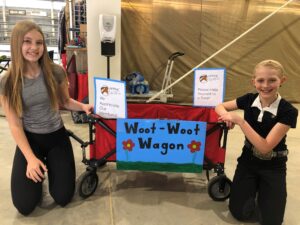Creating the Organizational Meeting
Once approval has been granted to organize the junior club, the Youth Advisor should help the youth determine a meeting place and time for the first organizational meeting. This meeting might take place at a horse show or in conjunction with an APHA Regional Club meeting. The meeting should be in a convenient and comfortable setting for all members.
Next, the Youth Advisor and interested youth should send out notices of the meeting to your proposed membership. The Director of Youth Activities may be able to provide a list of youth within the proposed boundaries of your club. A notice of the meeting should be placed in the APHA Regional Club’s newsletter or in any local or regional horse publications.
Conducting the Meeting
Prior to the meeting, a temporary chairperson and a temporary secretary should be appointed. The temporary chairperson should be capable of speaking to the group and keeping the meeting in order. The temporary secretary should take detailed minutes of the meeting.
At the appointed time and place, the temporary chairperson should call the meeting to order, express appreciation to those attending, and explain the reasons the club should be formed. The temporary chairperson should then call for a discussion from the floor (to get people involved immediately), asking for thoughts on the needs and goals of the club. It is important that whoever conducts the initial meeting maintain full control at all times. However, they should be responsive to the audience, getting them involved and listening carefully to all ideas.
 Paint Horse clubs bring the ideals of the American Paint Horse Association to horse enthusiasts at the local level. These equine booster clubs are as diverse as the Paint Horse breed itself, but they share common goals—to educate the public about the qualities of the American Paint Horse and APHA, to encourage Paint breeding for conformation and athletic ability, to give members the opportunity to show their Paints and to host alternative activities such as trail rides and social events for non-competitors. For your Paint enthusiasts who may live miles apart, but share a love of horses, clubs provide a common meeting place and a host of activities. Beginning a junior club can be a great benefit and growth stimulator for an existing adult club.
Paint Horse clubs bring the ideals of the American Paint Horse Association to horse enthusiasts at the local level. These equine booster clubs are as diverse as the Paint Horse breed itself, but they share common goals—to educate the public about the qualities of the American Paint Horse and APHA, to encourage Paint breeding for conformation and athletic ability, to give members the opportunity to show their Paints and to host alternative activities such as trail rides and social events for non-competitors. For your Paint enthusiasts who may live miles apart, but share a love of horses, clubs provide a common meeting place and a host of activities. Beginning a junior club can be a great benefit and growth stimulator for an existing adult club.





